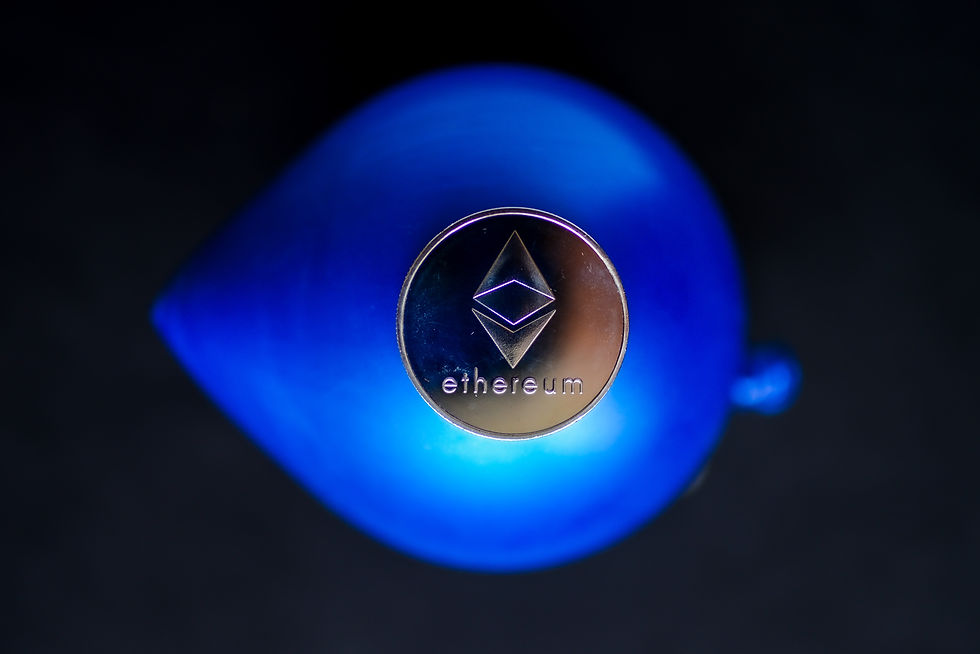The Interrelationship between Web3 and Blockchain
- Michael Paulyn

- May 21, 2023
- 2 min read
Web3 technologies rely on decentralized technologies like Blockchain and distributed ledger technology, fostering the development of secure and transparent systems without central authorities or intermediaries. These characteristics form the foundation of Web3 technologies. Decentralized applications (dApps) are crucial in connecting Web3 and blockchain.

These applications are constructed on decentralized technologies like Blockchain, enabling users to engage with decentralized systems like traditional web applications. dApps have diverse applications, spanning financial services, supply chain management, and social networking platforms. Alongside dApps, Web3 technologies also leverage smart contracts.
Smart contracts are self-executing contracts encoded and programmed with predefined terms directly written into the code. They can verify whether the conditions specified in the agreement/contract have been met. Typically deployed on Blockchain platforms, smart contracts automate specific processes, such as the automatic release of funds upon meeting predetermined conditions.
Web3 technologies and blockchain are intrinsically intertwined, with Web3 leveraging decentralized technologies like Blockchain to establish secure and transparent systems for interacting with the internet.

Crypto the Building Blocks of Web3
Cryptocurrencies and blockchains form the fundamental building blocks of Web3. However, the decentralized web encompasses a broader range of technologies, including AR, VR, IoT, and others that are not directly related to blockchain or digital currencies.
Web3, as the third generation of the internet, is rooted in blockchain technology. Nevertheless, it also leverages technologies like machine learning, big data, artificial intelligence (AI), the Internet of Things (IoT), augmented reality (AR), virtual reality (VR), and more, enabling decentralized applications (DApps) to analyze information in a sophisticated and human-like manner within the Web3 environment.
For instance, AR and VR technologies can provide exceptional shopping experiences by allowing customers to interact with products virtually before purchasing. Although these technologies are not blockchain-based or reliant on cryptocurrencies, their integration aims to enhance the efficiency of blockchain technology.

Combining AI and blockchain offers organizations a better way of managing sensitive data sets. By validating supplied data, AI technology can rapidly process requests, and smart algorithms can facilitate prompt decisions regarding fund issuance or credit approval.
Additionally, blockchain ensures the adequate protection of data sets. Furthermore, blockchain plays a crucial role in establishing the infrastructure of Web3 by enabling organizations to decentralize Web2 services such as cloud computing, social networking sites, and databases. Similarly, AR and VR are essential in shaping the metaverse, exploring innovative ideas, and enhancing virtual experiences within the Web3 framework.
Cryptocurrencies support peer-to-peer payments and serve as digital-native methods of remittance. Blockchains would need the incentive system for network participation with cryptocurrencies, and users would need designated storage for their digital assets in crypto wallets. Moreover, cryptocurrencies eliminate the need for trusted intermediaries by allowing Web3 users to utilize tokens like Ether (ETH) for seamless money transfers.
Additionally, Web3 aims to be permissionless, trustless, and open to all, aligning with the ethos of cryptocurrencies. Nonfungible tokens (NFTs) are similarly instrumental in enabling transparent proof of ownership for various items such as in-game assets, digital art, personal data, and more.
Stay in the Know with EH-3!
Jump in and dive into Web3; each month covers two new concepts within this exciting new space. For more information, go to the EH-3 website now!





Comments